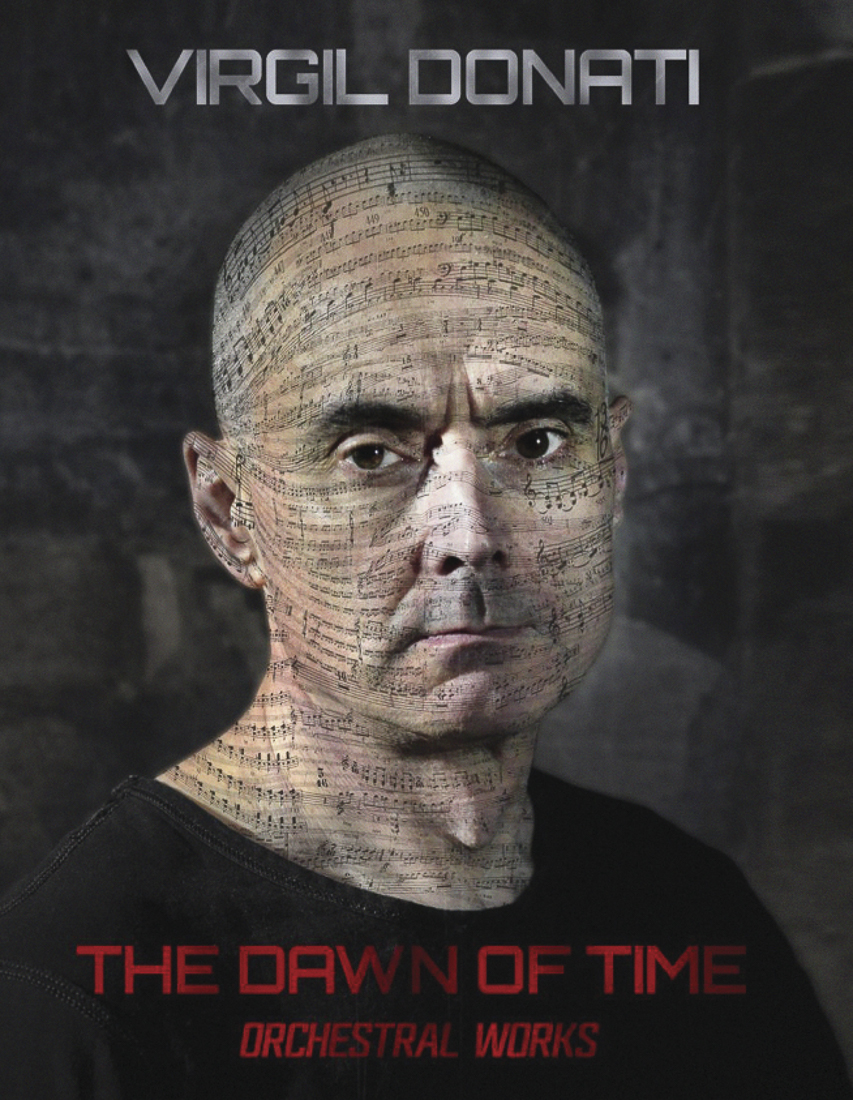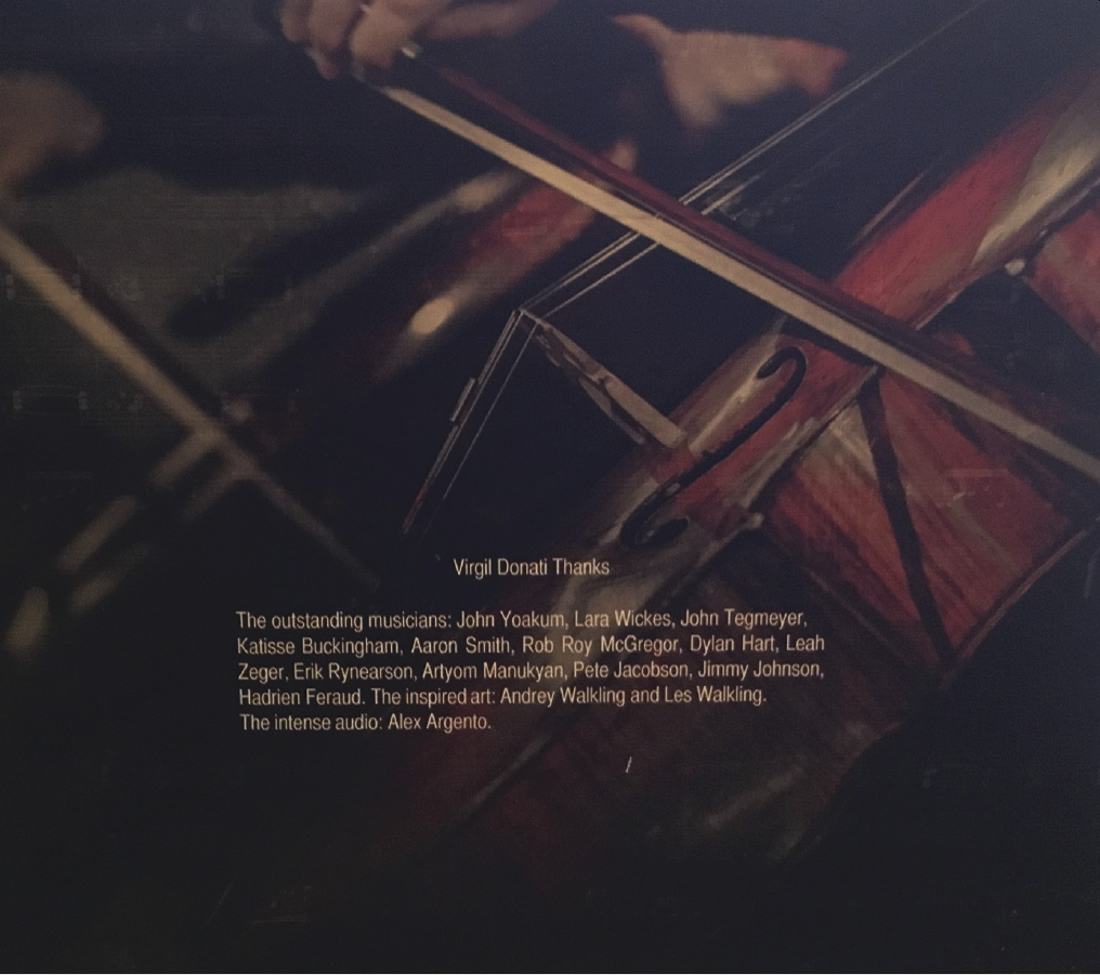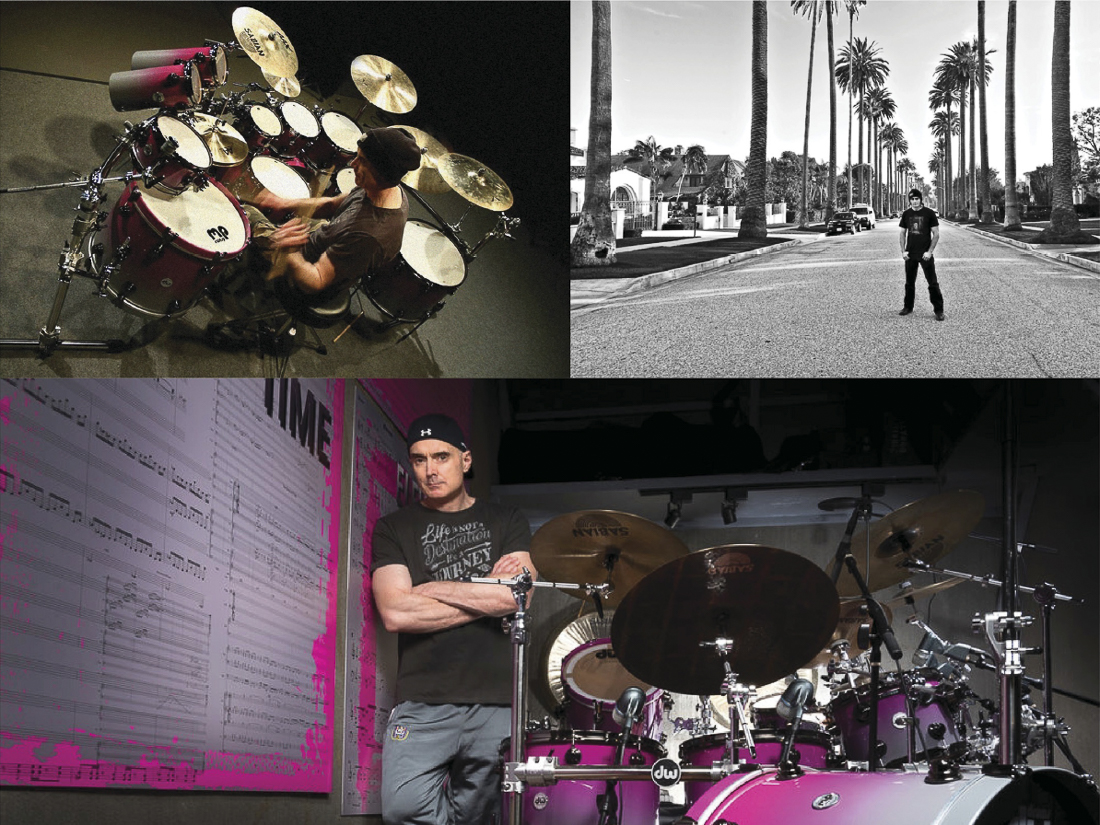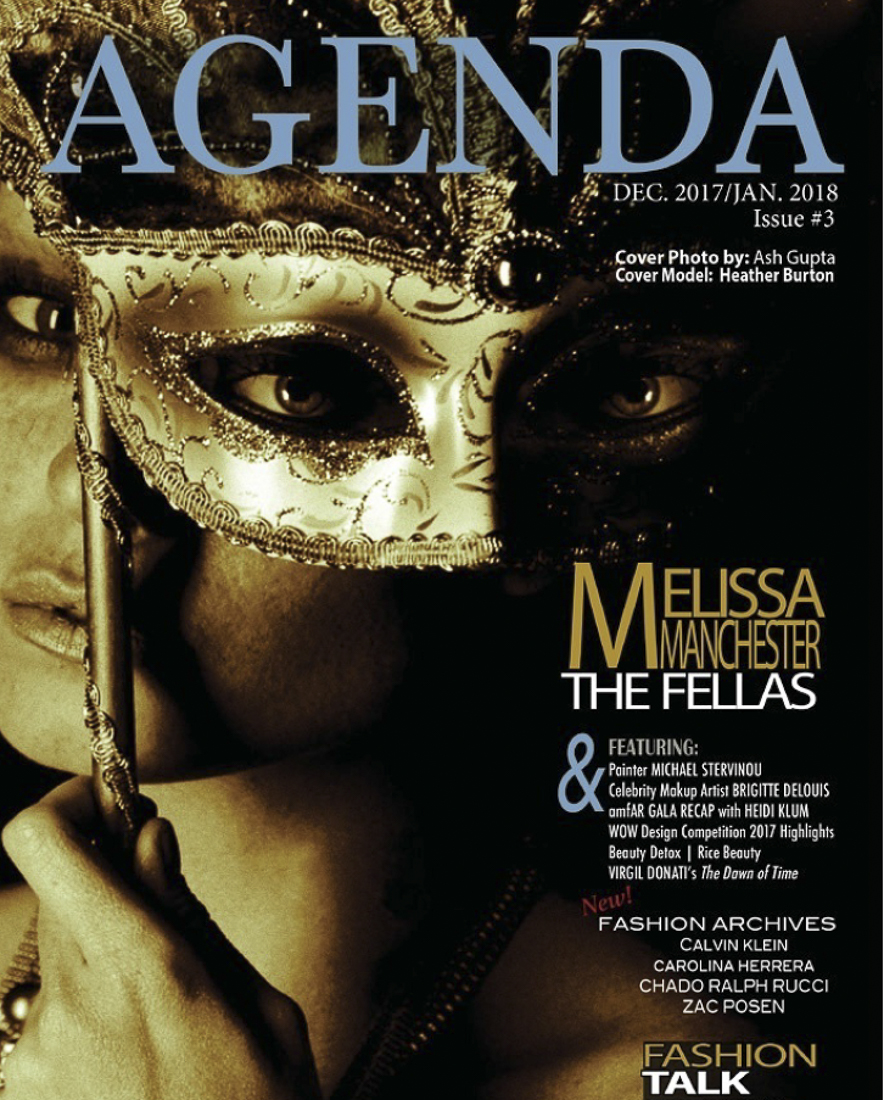Virgil Donati has always been a massive musical force in the world of power drumming. He is associated with many genres of music ranging from fusion to progressive rock to metal. He is associated with mega acts such as Dream Theater, Planet X, CAB, and others. He performs regularly all over the world, and his brand of drumming has wowed his loyal audiences that continue to grow as Donati continues to impress with each beguiling performance. Virgil has released many records in his career, but none of the scope of his most recent masterpiece, The Dawn of Time, which took him 10 years to make and six months to record.

“I just feel this urge to express music and rhythm through my music. Basically,here there’s a lot of interesting and probably innovative rhythms—it’s knowledge that I’ve come by just through drumming, and to put it to the surface of music is what makes it interesting.” —Virgil Donati
CD Reviewed by Kaylene Peoples
The Dawn of Time: Part1, of Light; Part 2, of Origins; Part 3, of Evolution; Part 4, of Sky; Part 5, of Life
Virgil Donati cleverly separates his musical vignettes with colorful song cycles, labeled Part 1 – Part 5; but to be frank, without looking at the track separation on his CD track listing, the parts are seamless and make up literally one beautiful, emotionally charged composition. Always looking for similarities, I could hear Benjamin Britten, Leonard Bernstein, and Gustav Holst. The orchestration reminded me very much of the opening of Britten’s War Requiem and Holst’s The Planets ; and possessing a hauntingly beautiful richness mostly found in the works of Wagner or Strauss. Donati combines his fugue-like, yet sporadically spirited musical vignettes with aggressive and sensitively placed contemporary drumming, giving it a surreal quality reminiscent of some of my favorite early 20th Century composers. The timbre of Virgil’s drums makes The Dawn of Time a uniquely neo-classical original and is filled with contrapuntal writing, repeated ostinatos, syncopated rhythms by the drums, and slow-moving string lines. This is what I call tasty orchestration!
Concerto for Drums:
First Movement, Second Movement, Third Movement, Fourth Movement
The unison low string opening sets the stage for the scherzo, perfectly accented with sprinkles of woodwinds with well-placed fluttering. The interweaving horns and winds with this schizophrenic movement of fugal undertones brings you to the allegro with constant drumming. Then Virgil lets the strings shine in unison in the treble clef, followed by a familiar theme. In track 10, things turn more contemporary with electric bass and arrangements reminiscent of a pop and progressive rock detour, supported by a steady 4/4-time signature. The title is appropriate as Virgil’s drumming is the star of this piece, only void of his presence at the end.
The Winds of War:
First Movement, Second Movement, Third Movement
I liken “The Winds of War” to “Jupiter.” (I used Gustav Holst’s The Planets
reference earlier in my critique.) He adds electric bass, bee-bop flute, and builds the celli with a drone-like repeated tonal bottom to which lone instrumental sections are allowed to shine. This is the most contemporary piece on the album.

Prelude No. 1
This piece takes a drastic turn in style with a Bartok-ish solo piano performance that incorporates a 20th Century freeing element that is complex, simple, and beautiful in its show of 21st Century duality. The Dawn of Time is an ambitious undertaking with traditional symphonic integrity. Even if you’re not a classical music lover, you will gain a whole new respect for this genre. Virgil Donati adds a contemporary element with his drumming, then teases us even more with sprinkles of jazz, progressive rock, and sweetly arranged strings, winds, and horns. He introduces electric bass with the progressive ascension of the ever-evolving track listings in the spirit of Copeland . . . and finally closes with solo piano.
Virgil Donati Discusses The Dawn of Time CD | The Q&A with Virgil Donati took place during the Tony Palkovic show (88.7 FM KSPC Claremont) on May 16, 2017.
RADIO HOST TONY PALKOVIC ASKS:
TP: Tell me about the album.
Virgil Donati: The album is called The Dawn of Time . . . my latest release, and it was about ten years in the making, not continuously of course, but this began in the tour in France I did with Bunny Brunel in 2007, when I brought my whole rig with the piano on the road because we had so much down time; I just started writing. I always had this dream to do an orchestral album, seriously, for drums and orchestra. I don’t think there’ve been too many pieces that have been written for orchestra, which features the drums. So that’s what I accomplished with this record. I think after 10 years, I finally got there.

TP: Who’s on the Album?
VD: First my virtual orchestral library is on it . . . But I have a lot of great players. It’s a hybrid of my orchestral sample libraries and real players, including flutist Katisse Buckingham, oboist and English horn player John Yoakum, and more. Real strings are layered over samples, all the woodwinds and trumpets are live. Being a drum record primarily, it had to have some support from electric bass (which is on most of the tracks).
TP: You studied at Dick Grove. Tell me more about your musical background.
VD: I studied piano at a very young age. That’s where I got my love for symphony. I did a little bit of arranging and composition at Dick Grove, but not to this extent. I think that what I’ve done on this record is really coming from a spontaneous place—from somewhere inside—all the musical knowledge that I’ve accumulated over the years. I’m not really a “symphonic” composer, but I just applied my ears, listened, and just wrote.
TP: Regarding the actual recording, how long did it take to record?
VD: Not too long. It took a long time to write and orchestrate, but it was just a matter of getting the players in there. I recorded the drums. I did a couple of takes myself. I have the luxury of recording myself. I have my own studio, so I can record a take and then decide the next day . . . no, I don’t like that after all. Let’s do it again. Usually no more than two takes.
TP: Did you use Pro Tools?
VD: No, I used Digital Performer.
TP: Did you overdub?
VD: Yes, I started with my sketches that were done with orchestral sample libraries, and from there I started layering real musicians one at a time, all in my studio.
TP: How long has the album been out?
VD: It came out in September (6 months or so).
TP: Regarding “The Winds of War,” tell me about that piece.
The “Winds of War” is one of the more commercial tunes. There’s one called “Requiem for Humanity,” which is very melodic and flowing; but the title track, “Dawn of Time,” is an epic; and then “Concerto for Drums is intense with three movements that follow the movement structure. There are a lot of dynamics.
KAYLENE PEOPLES ASKS:
KP: Please tell Agenda readers about your inspirations for “The Winds of War.”
VD: Well, inspiration. It’s really hard to put my finger on it. I just feel this urge to express music and rhythm through my music. Basically, here there’s a lot of interesting and probably innovative rhythms—it’s knowledge that I’ve come by just through drumming, and to put it to the surface of music is what makes it interesting. And I decided that the orchestral palette was a wonderful way to really highlight what is going on in the drums and combining it with those orchestral sounds really works so well, I found. The inspiration for the entire record really came from that vision of hearing or wanting to hear the orchestrations I play on the drums expressed through the orchestra. The mixing was done in Palermo, Italy.

This CD review/interview can be found in Agenda‘s 3rd print issue.
#CD Reviews #Interview #agendaprint




